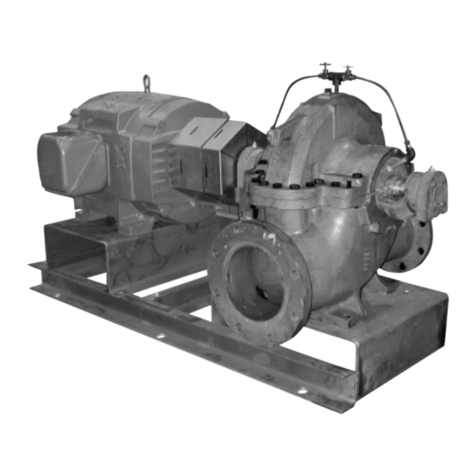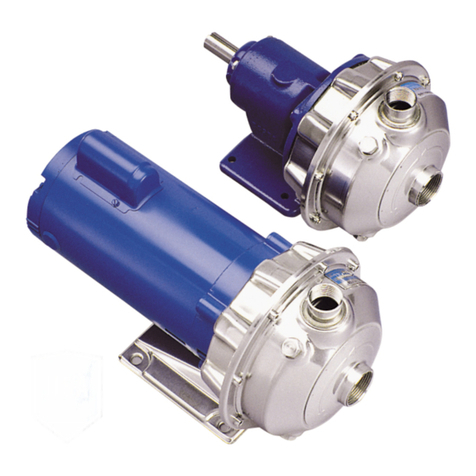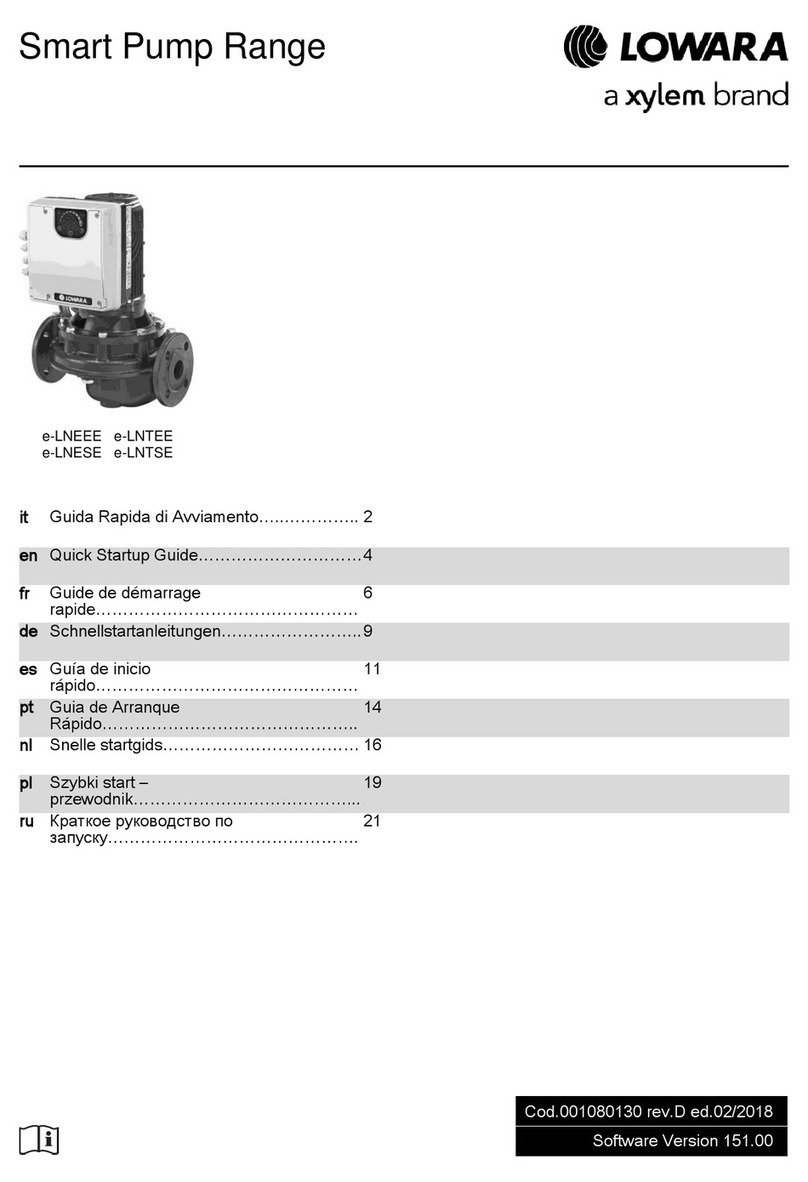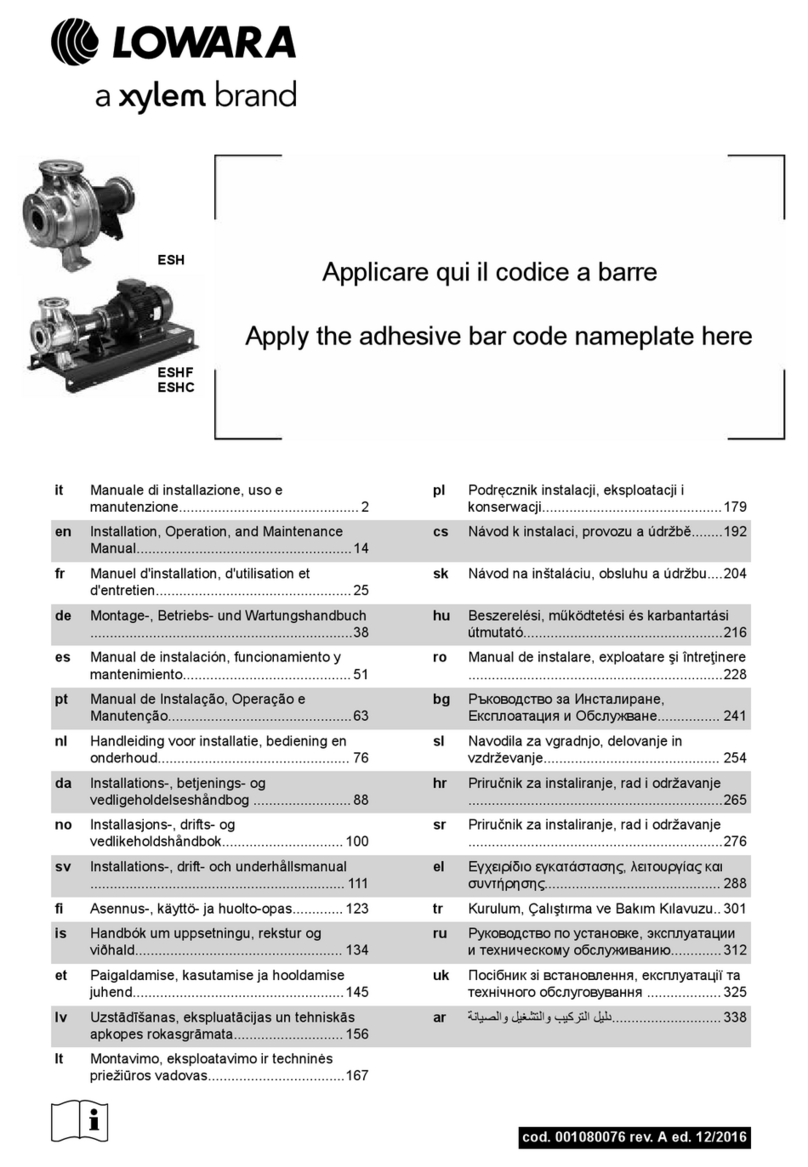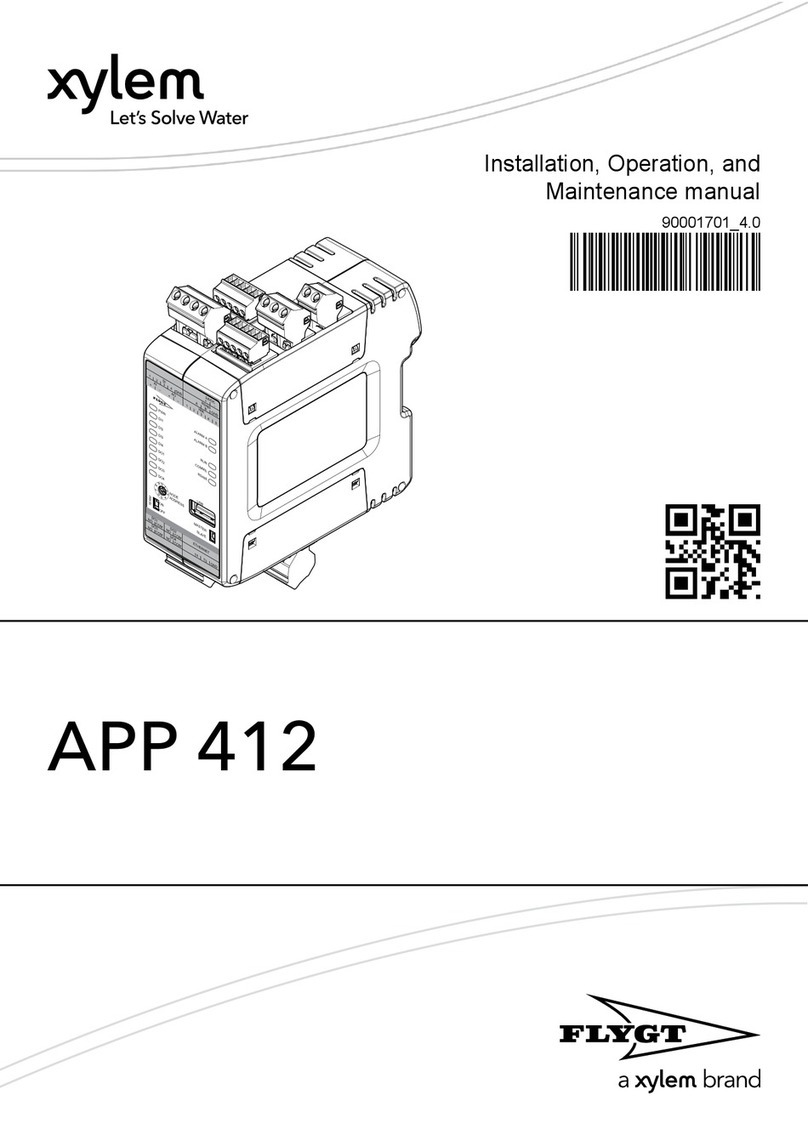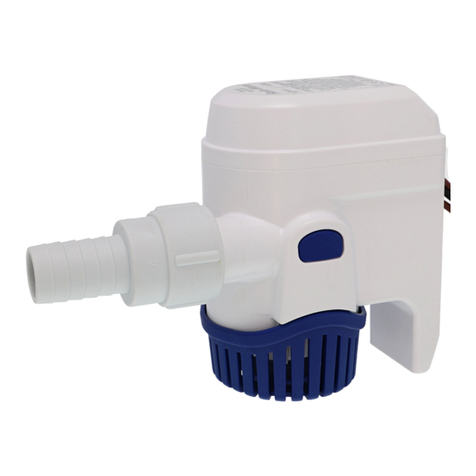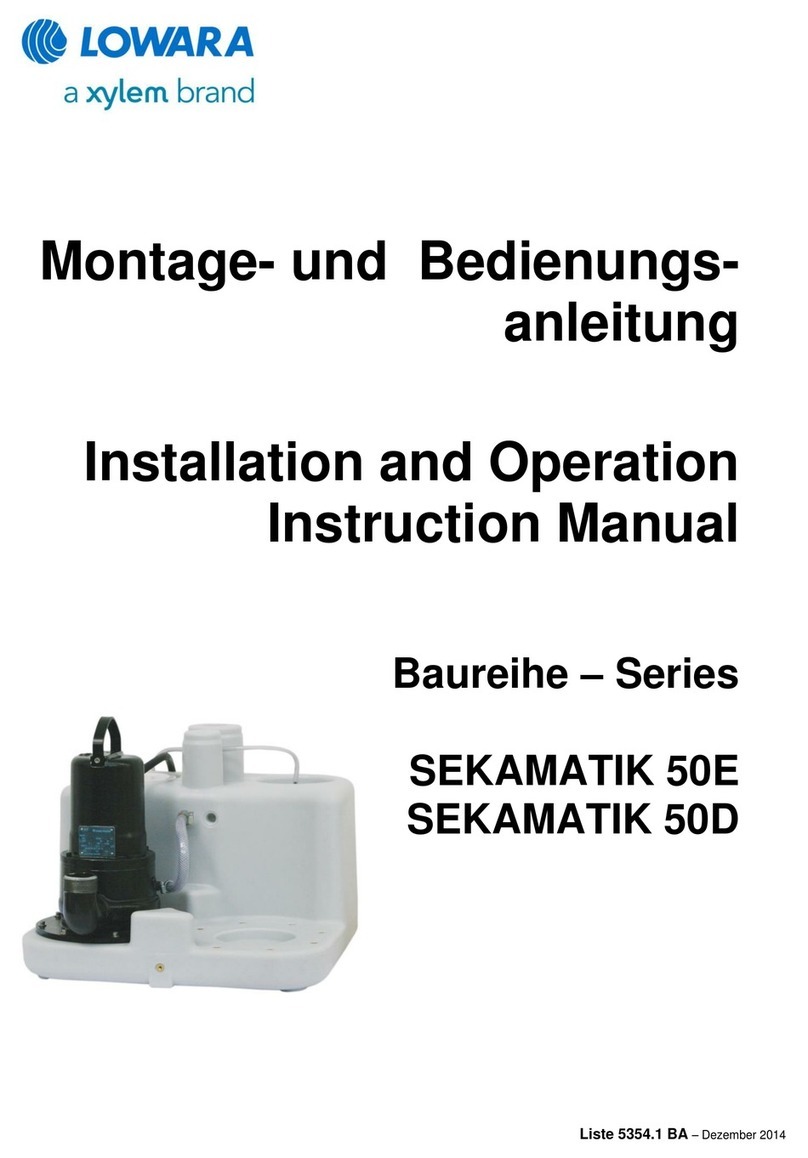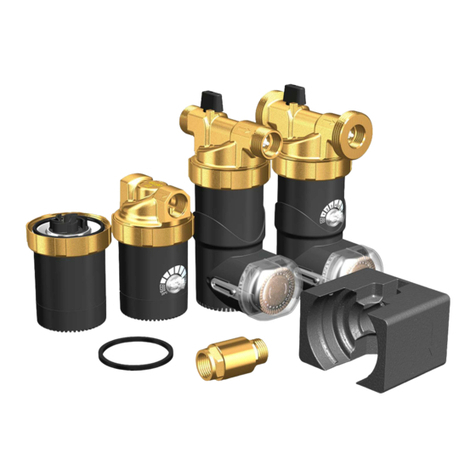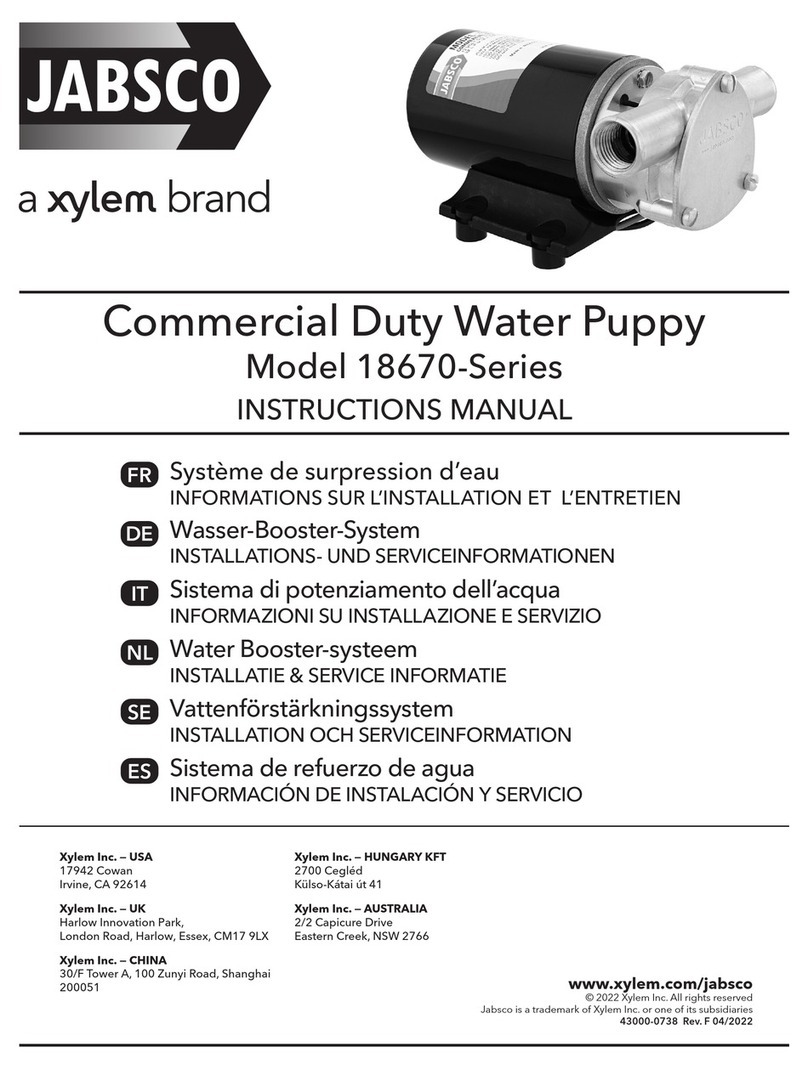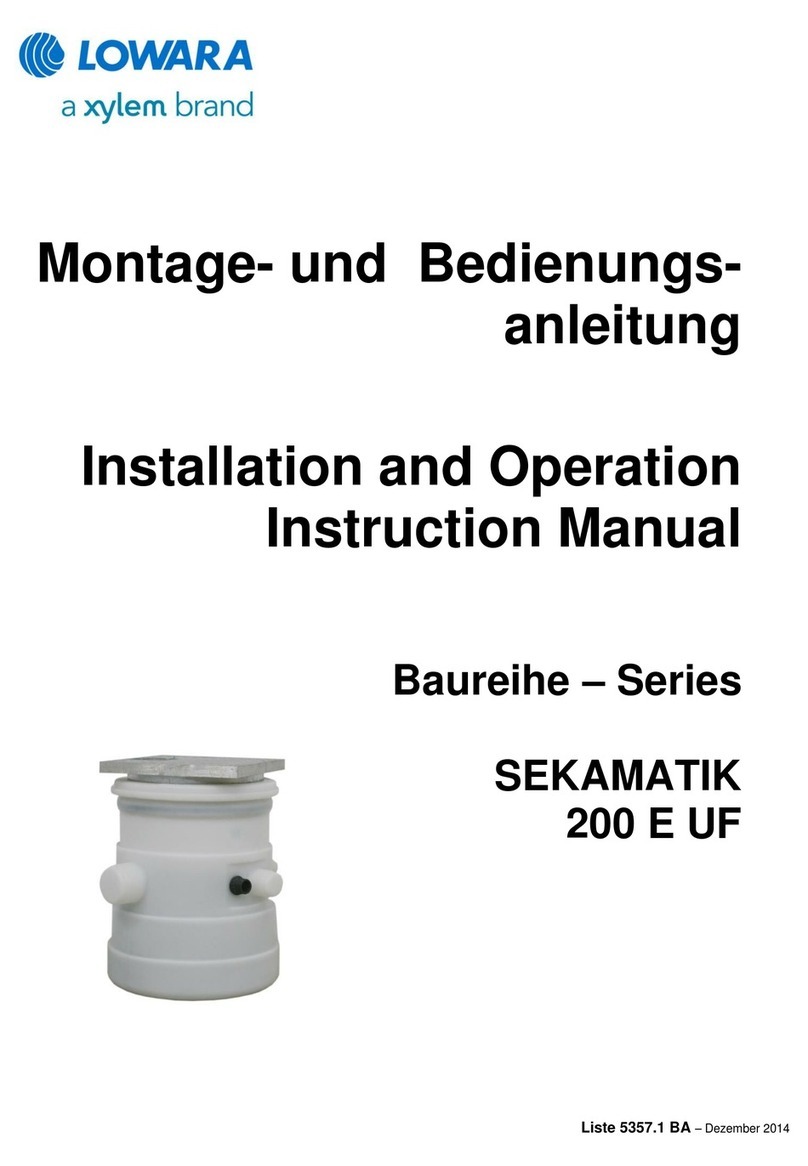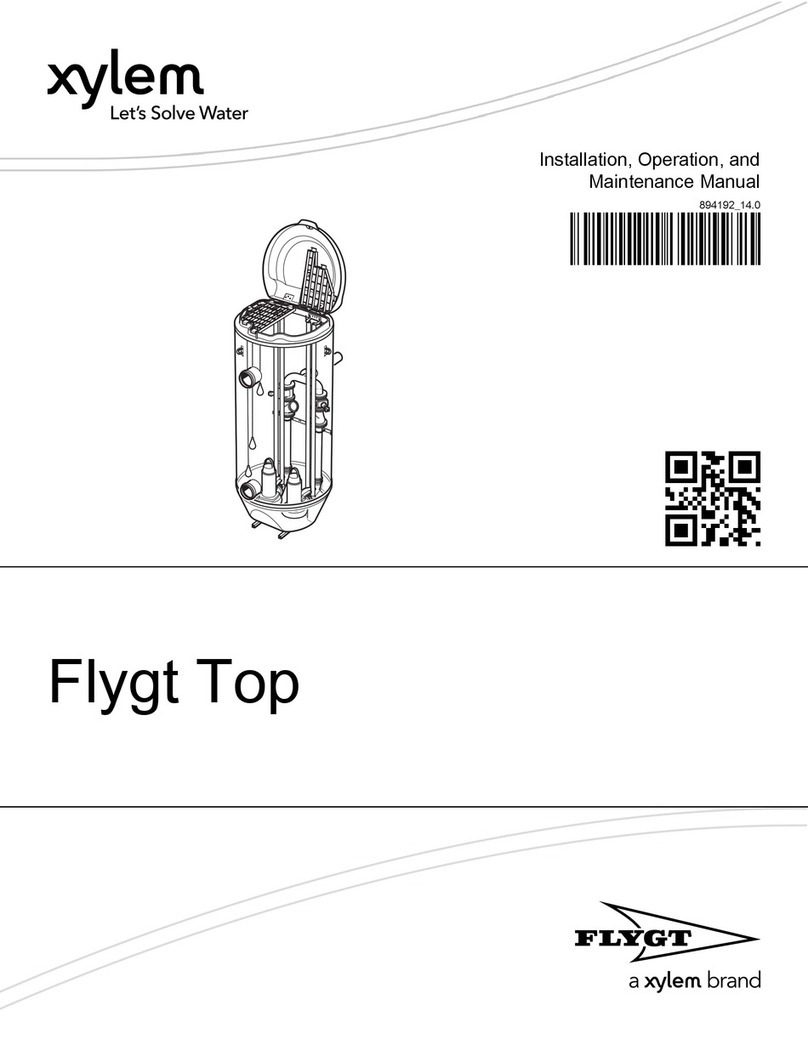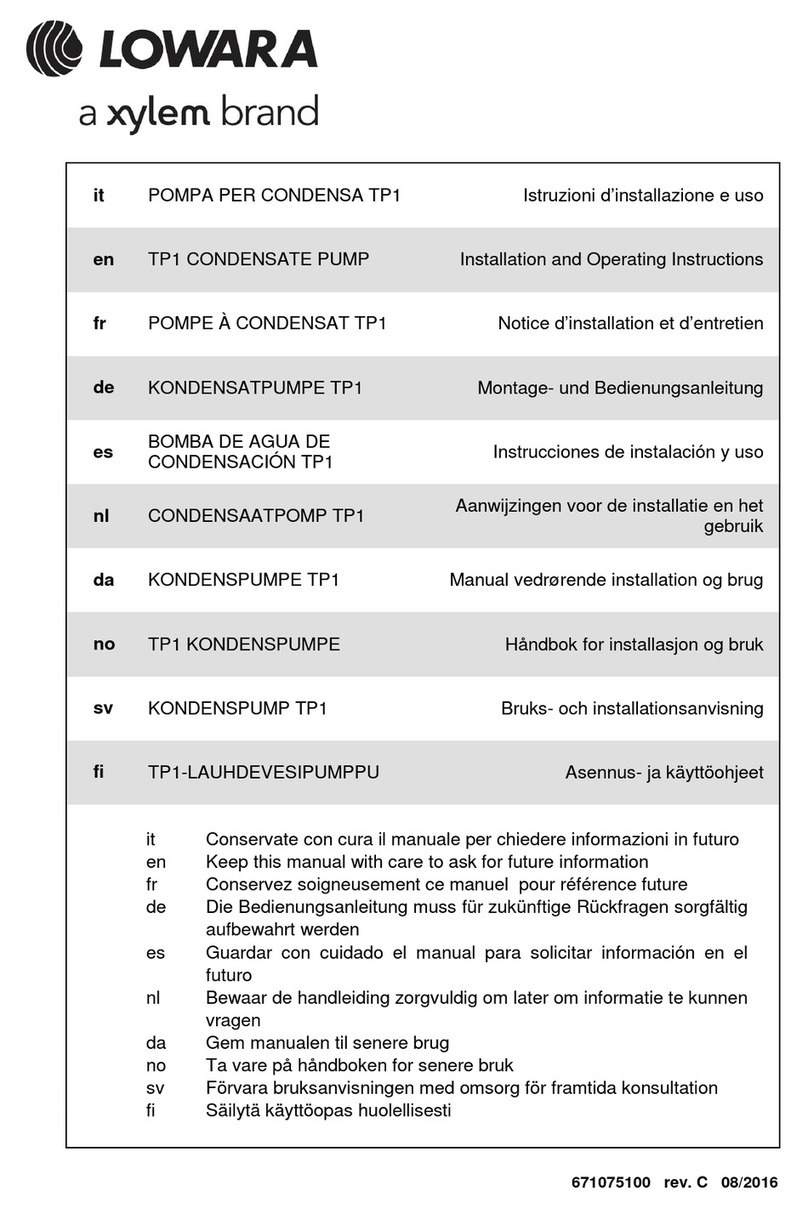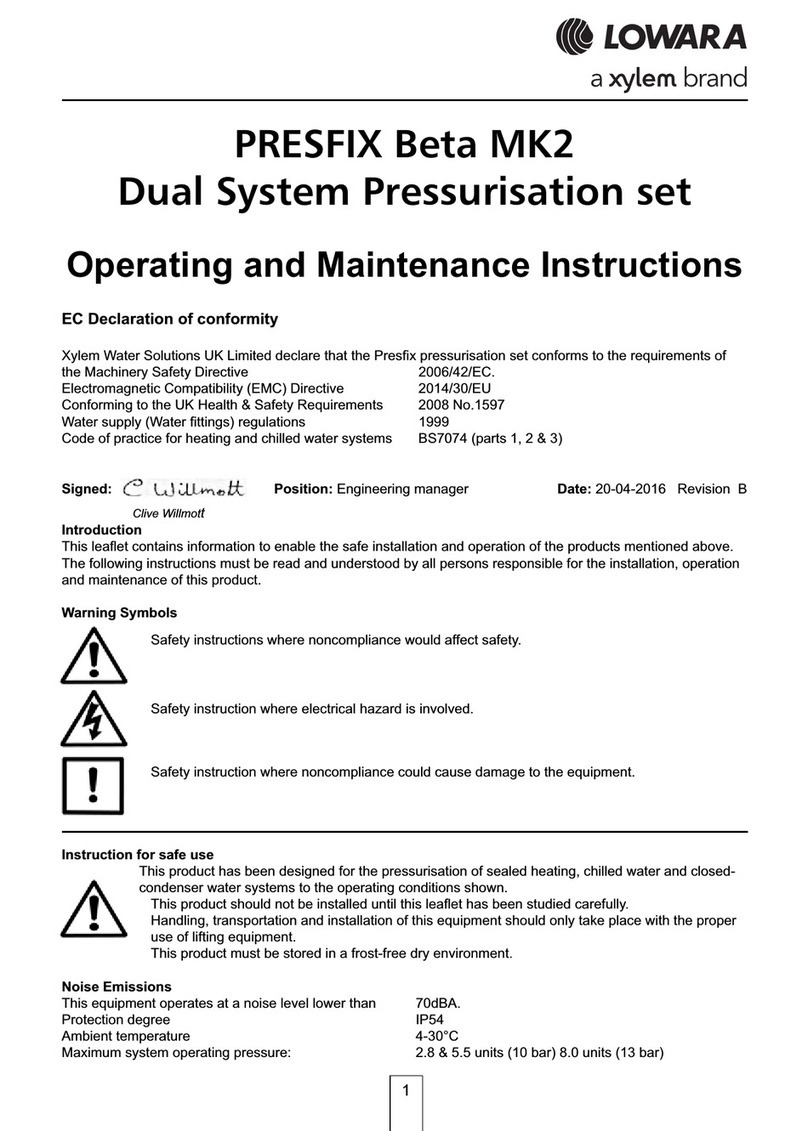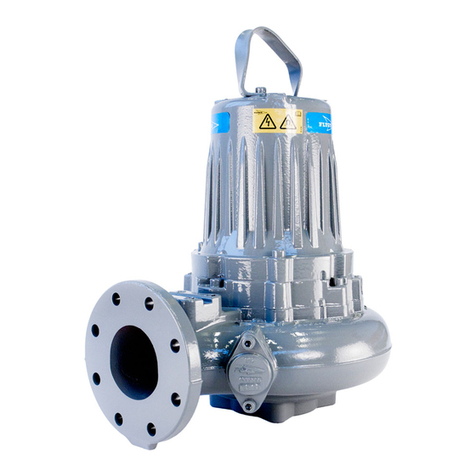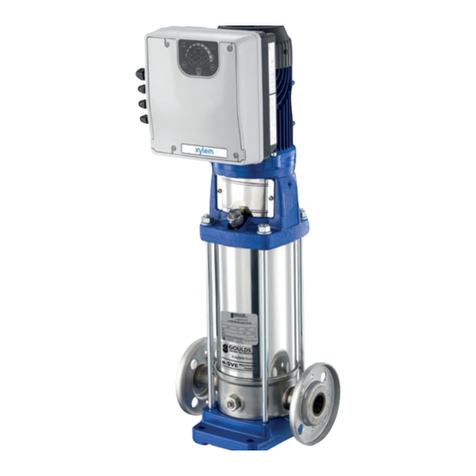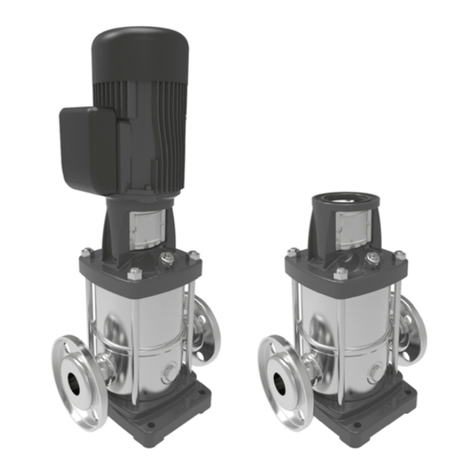
Allowing water to freeze in the system may result in damage to
the pump and plumbing system.
Non-Toxic antifreeze for potable water may be used with Flojet
pumps. Follow manufacturers recom menda tions.
Refer to coach or equipment manufacturers instructions for
their specific winterizing and drainage procedures.
Do not use automotive antifreeze to winterize potable
water systems. These solutions are highly toxic and may
cause serious injury or death if ingested.
1. Drain the water tank. Open tank drain valve and
plumbing drain valves if applicable. You may use the
pump to drain the tank by opening all the faucets in the
system. Allow the pump to operate until the tank is
empty. Do not operate the pump more than 15 minutes
continuously.
2. Open all faucets and flush the toilet to purge all the
water from the pump and the plumbing system. Run
the pump until no water is coming through the faucets.
Turn power to the pump off. Be sure that all the water
from the drain lines are drained.
3. Remove quick connect inlet and outlet fittings from the
pump and turn the pump on to pump out remaining
water from the pump head. Be sure to have a catch
pan or a rag under the pump to prevent water from
spilling on to the RV. Turn the pump off once the
plumbing is empty. Leave the fittings disconnected
from the pump until the system is ready to be used
again. Make a note on your tank filler that the plumbing
is not connected.
4. Be sure that all faucets are left open to protect against
damage to the plumbing.
Portable water systems require periodic maintenance to
deliver a consistent flow of fresh water. Depending on
use and the environment the system is subject to,
sanitizing is recommended prior to storing and before
using the water system after a period of storage.
Systems with new components, or ones that have been
subjected to contamination, should also be disinfected as
follows:
NOTE: The sanitizing procedure is in conformance with
the approved procedures of RVIA ANSI A119.2 and the
US Public Health Service.
Use of the following methods to determine the amount of
common household bleach needed to sanitize the
tank.
A) Multiply “gallons of tank capacity” by 0.13; the result
is the ounces of bleach needed to sanitize the tank.
1. B) Multiply “Liters of tank capacity” by 1.0; the result is
the milliliters of bleach needed to sanitize the tank.
2. Mix into solution the proper amount of bleach within a
container of water
3. Pour the solution (water/bleach) into the tank and fill
the tank with potable water.
4. Open ALL faucets (hot and cold) allowing the water to
run until the distinct odor of chlorine is detected.
5. The standard solution must have four (4) hours of
contact time to disinfect completely. Doubling the
solution concentration allows for contact time of one
(1) hour.
6. When the contact time is completed, drain the tank.
Refill with potable water and purge the plumbing of all
sanitizing solution.
WARRANTY
FLOJET warrants this product to be free of defects in material
and/or workmanship for a period of two years after purchase by
the customer from FLOJET. During this two warranty period,
FLOJET will at its option, at no charge to the customer, repair or
replace this product if found defective in material or
workmanship, with a new or reconditioned product, but not to
RETURN PROCEDURE
Prior to returning any product to FLOJET, call customer service
for an authorization number. This number must be written on the
outside of the shipping package. Place a note inside the
package with an explanation regarding the reason for return as
well as the authoriz ation number. Include your name, address
and phone number.
